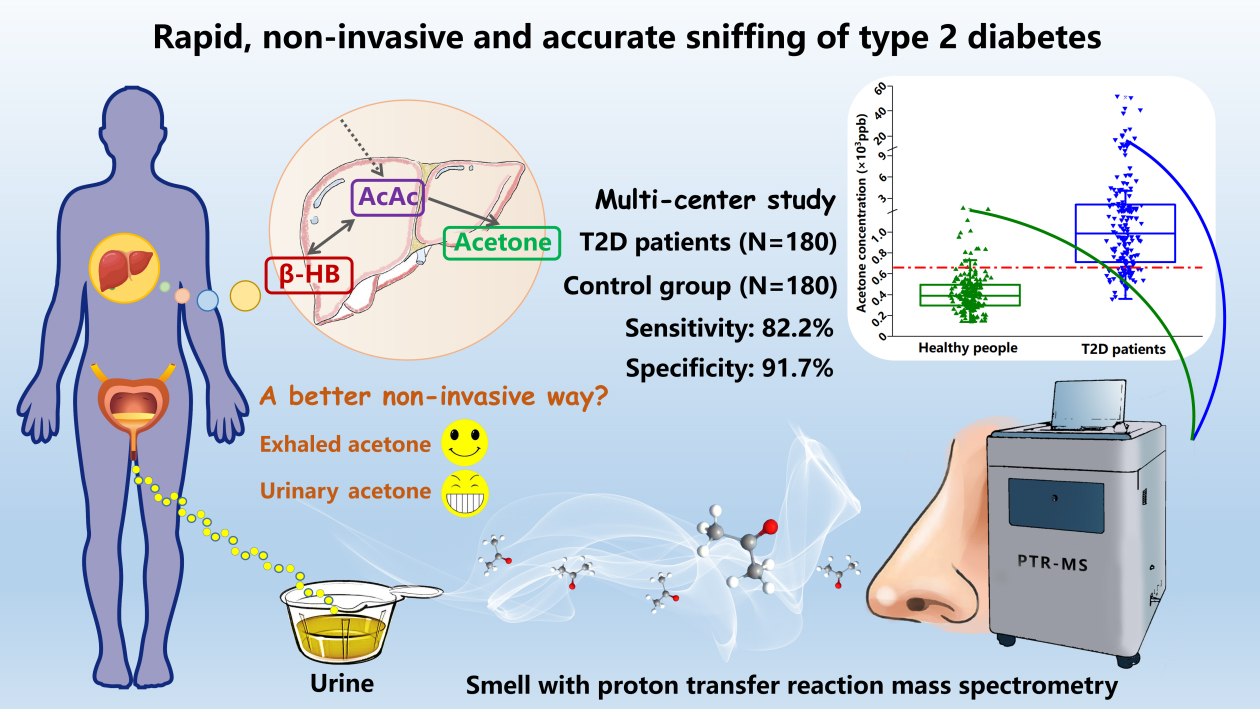Type 2 diabetes (T2D) accounts for more than 90% of the confirmed diabetes cases. It has become a common metabolic disease and is expected to affect 380 million people worldwide by 2025. Currently, clinically used diagnostic tests are mainly based on fasting plasma glucose, oral glucose tolerance test and glycosylated hemoglobin A1c (HbA1c). Although these methods are highly accurate, they are all invasive tests based on blood sampling.
A research team led by Prof. SHEN Chengyin from the Hefei Institutes of Physical Science (HFIPS) of the Chinese Academy of Sciences (CAS) has been searching for a new non-invasive screening method for T2D.
Using a self-developed proton transfer reaction-mass spectrometry (PTR-MS), the researchers detected volatile organic compounds in the urine of T2D patients and the results were published in Talanta.
The study was based on the detection of urinary acetone by PTR-MS.
Urinary acetone is one of the ketones produced by fat metabolism. Due to insufficient utilization and storage of glucose in the blood, T2D patients will accelerate the metabolism of urinary acetone.
The researchers recruited 180 T2D patients and 180 healthy volunteers for a multicenter study.
A diagnostic model with an accuracy of 81.3% and a threshold of 690.1 ppbv was established by using urinary acetone at center one. The model was validated at two other centers with similar results. Furthermore, the accuracy of this method was comparable to the diagnostic method used in clinical practice.
"Sniffing T2D by urinary acetone is safe, non-invasive, fast and accurate," said XU Wei, first author of the study. "We hope that the method can provide a reference for screening and diagnosis of T2D."
This work was supported by the National Natural Science Foundation of China, the Youth Innovation Promotion Association of CAS, the Joint Fund between the Second Affiliated Hospital of Anhui Medical University and the Center of Medical Physics and Technology of HFIPS of CAS, etc.







